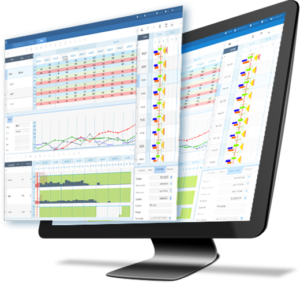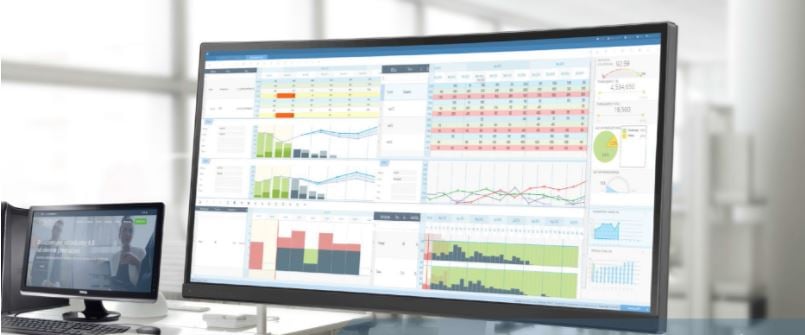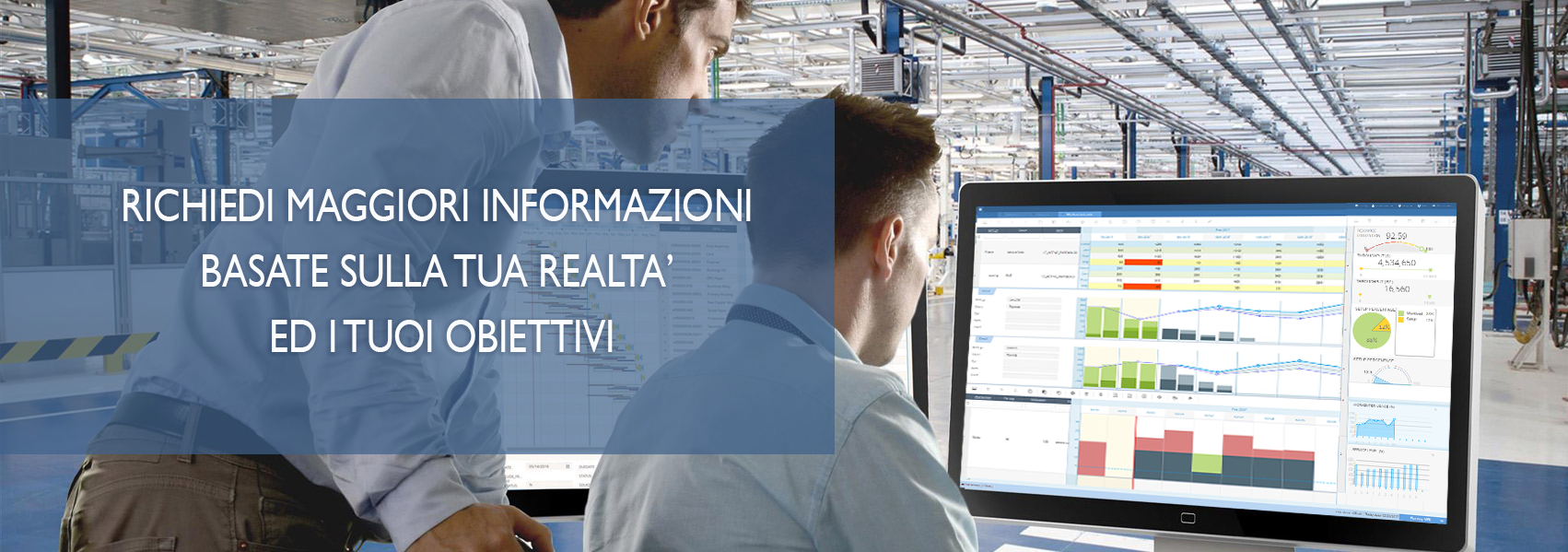In an increasingly complex economic context, characterised by uncertain demand but also by strong price pressures that require any waste to be reduced, it is difficult to think of being able to meet the dates requested by customers by increasing stocks of materials and capacity. To remain competitive, the process of generating and managing forecasts and verifying their production feasibility must be improved.
A good forecasting process allows you to greatly reduce the time invested in the forecasting process, reduce costs and improve the level of customer service. If then the forecasting process is integrated with the production feasibility, these benefits are amplified allowing the factory to increase the level of productivity and eliminate the missing ones.
In manufacturing companies where delivery times are reduced compared to purchase and production lead times, they need to equip the forecasting process with appropriate tools with characteristics typical of production companies. In particular, the instrument must have the ability to:
- Different levels of aggregation and forecast detail
- Cross-functional collaboration in their generation
- Calculation of the punctual and cumulative forecast error
- Analysis of the trading portfolio for statistical values of the forecasts
- Verification of the feasibility of the forecast plan
Let’s see why these characteristics are fundamental in the generation and management of forecasts in a productive company.
1. At each horizon the right detail of the forecast
Forecasts have a different function in the long, medium and short term. To maximize the reliability of the forecasts and minimize the commitment of the people involved in the management of the process, it is convenient that the forecasts are generated with a different level of aggregation depending on the time horizon.
Long-term forecasts allow the procurement of raw materials with higher lead times and the planning of critical components. Reasoning about product families decreases the number of forecasts to be managed and controlled, and increases the quality of forecasts due to the greater number of historical samples involved in the calculation.
However, as we move towards the short term, we must work on less general product families, in order to correctly manage the planning of the components with an intermediate lead time. Finally, in the short term, forecasts should be generated directly at the finished product level, so as to also reach the degree of detail necessary for correct delivery planning.
2. Collaboration in forecast generation
In a production system there are complex interactions that can be managed effectively only through a dialogue between the different company functions: stock levels can be constrained by financial availability, supply lead times depend on relationships with suppliers, production has the constraint of available resources, the salesperson wants to respect the commitments made with customers.
It is necessary for each business function to participate constructively in the definition of a quality and feasible forecast plan.
In many situations, the highest quality solution consists in the introduction of a multilevel forecasting model, where each entity is called upon to provide a “portion” of the forecast: Purchasing develops the forecast of consumption of raw materials, Production that of semi-finished products, the Commercial function that of the finished product.
3. Minimize forecast error
Each forecast should be accompanied by an assessment of the forecast error. The specific forecast error, setting a desired degree of reliability of the forecast, the possible fluctuation of the actual data with respect to the forecast. In particular, the greater the need to look far into the future, the greater the uncertainty of the forecast and therefore the forecast error.
To guarantee the desired level of service to customers, the forecast that feeds the production plan must necessarily also take into account the forecast error.
It could be tempting to feed the production plan with the increased forecast of the punctual forecast error, to be sure to maintain the service level. But the forecast error calculated in a timely manner on the different temporal buckets overestimates
4. Not only historical data
The traditional calculation basis of any forecasting system is past consumption. However, historical data are not always sufficient to obtain quality forecasts. Indeed, for many companies characterized by high variability in finished product demand, feeding the production plan with forecasts generated by historical data alone becomes a bit like trying to drive a car on a winding road looking exclusively in the rear-view mirror.
The management of the acquired portfolio and the trading portfolio becomes fundamental.
- The acquired portfolio represents a certain component of the forecast, and in some companies it may also extend significantly in the future, albeit with different degrees of saturation of total capacity. Not considering the acquired portfolio means giving up the management of a known fact that improves the accuracy of the forecast.
- The negotiation portfolio must be analysed to statistically evaluate the percentages of transformation of negotiations into orders and highlight any systematic errors in excess or in defect.
5. Feasibility of the forecast
In a correct management of the forecasting process, the generation of forecasts represents only an intermediate point of arrival. The other fundamental activity consists in “balancing” the forecasts with the constraints of availability of material and resources present in the company.
Feeding a production plan with unfeasible consumption forecasts means putting the entire logistics chain into crisis: Purchases supply materials too early, Production is put in difficulty due to the lack of critical components or capacity problems, the promised delivery dates are not respected. In other words, costs increase and customer satisfaction decreases.
To ensure the consistent supply of the production plan, it is important to verify the feasibility of the forecasts through the same logic and calculation engines as the advanced production planning systems (APS). This allows you to simulate the future evolution of the sales plan by highlighting in advance all possible critical issues in terms of materials and resources, and evaluating their effects on turnover and margin.

What are the best tools to support the demand forecast generation and planning process?
The most commonly used tools are the so-called forecasting software, which allow demand forecasts to be generated, analysed and managed over time. In most cases, these software were created to create forecasts in distribution companies and are then extended to manufacturing companies by adapting their algorithms.
But distribution and production companies have needs and dynamics that can differ greatly and software of this type can only bring modest benefits with the risk of reducing production efficiency. In fact, in the absence of specific algorithms for production, demand forecasting is very detached from what production is able to absorb as a feasible plan. This decoupling risks creating purchase orders that are then not absorbed, raising the level of warehouses and causing stock-outs of required products leading to a sharp reduction in the level of customer service.
Increase the reliability of forecasts in your company >
Cybertec Manufacturing Forecasting: Reliable and Feasible Forecasts for Manufacturing Companies
Cybertec’s “Manufacturing Forecasting” is the only demand forecast generation and management tool tailor-made for the manufacturing world, targeting all manufacturing companies where delivery times are reduced compared to purchase and production lead times.

Companies that use Cybertec’s “MF” solution are able to increase competitiveness through the generation and management of quality forecasts shared between the different business functions. The demand planner, in rapid interactive cycles, can easily:
- Increase the reliability of forecasts and reduce the time needed to manage them;
- Integrate the consumption forecasts of raw and semi-finished materials with the sales forecasts of finished products;
- Check the feasibility of a forecast plan based on the resources available in the company;
- Improve the ability to plan promotional campaigns in a targeted manner.
These new capabilities allow the company to be highly flexible and responsive to the reference market, verifying the feasibility of the demand in advance and making the appropriate decisions in time. In this way, demand planning manages to guide production while maintaining the focus on business objectives, achieving in a short time:
- Reduction of costs and time invested in the forecasting process;
- Increase in the level of service by eliminating stock outs;
- Reduction in the level of WIP and raw materials combined with an increase in productivity.
Why do our customers choose Cybertec MF?
- The forecast feasibility check can be performed using the calculation engines of the CyberPlan Advanced Production Planning System, Cybertec’s APS. The close integration between the two systems avoids the dispersion of data on different and complex integration tools, ensuring high consistency and compatibility of information. In the event that the forecast plan is not feasible, Sales, Production and Purchasing can take advantage of the simulation capabilities of the tool and proceed collaboratively to define a shared solution. Conversely, the early identification of periods of low load, perhaps related to a limited number of production centres, can become essential information to correctly manage sales efforts and to plan targeted promotional campaigns.
- Cybertec’s “Manufacturing Forecasting” solution allows the generation of forecasts not only at the finished product level but also at the level of product families that vary along the forecast horizon. It also supports companies in identifying optimal aggregation levels through the analysis of critical component and resource commonalities.
- Through the calculation of the punctual forecast error and the cumulative one, it allows an optimal estimate of the error that accompanies the forecast along the entire horizon. In this way it is possible to feed the production plan correctly, avoiding an excess of prudence that has the sole effect of introducing waste, inefficiencies and feasibility problems.
- The management of historical data is integrated with the management of the acquired portfolio and with the management of the trading portfolio. The “Manufacturing Forecasting” solution is able to analyse the negotiation portfolio by statistically evaluating the percentages of transformation of negotiations into orders and highlighting any excess or defective systematic errors. On the basis of this analysis, an acquisition forecast characterized by a high degree of reliability is generated.
Who is Cybertec’s MF solution suitable for?
Cybertec Manufacturing Forecasting is suitable for all those production companies where delivery times are reduced compared to purchase and production lead times. MF is used successfully by companies from medium/small size to large multinationals in the most varied product sectors.
It is therefore suitable for production companies that have the desire to improve their ability to generate and manage reliable forecasts over time by evaluating in real time the feasibility and the forecast plan with the production and purchasing plan.
 Who is Cybertec?
Who is Cybertec?
Cybertec was founded in 1991 on the initiative of Eng. Helmut Kirchner with the aim of providing industries with solutions for a high-performance Supply Chain and for effective production forecasting, planning and scheduling. The distinctive factor of the company lies in having developed internally and improved for over twenty-five years a set of tools easily adaptable to the peculiarities of each production reality. Unique simulation tools on the market, powerful and fast, to develop optimal production plans with great flexibility. Software perfectly integrated with the main management systems. With insights from hundreds of customer companies (including Cefla, ABB, General Electric, Gewiss, Vertiv) and the expertise of its consultants, Cybertec offers complete solutions like no other.
Reviewing the demand forecasting process is a delicate time, often leading to a change in the way we work. A phase that companies often view with fear. Our clients are supported in these stages of growth by professional consultants certified by APICS (The Association for Operations Management) and a competent support service. Teamwork is the key to success. The projects that are born are oriented towards value and the achievement of lasting results, to start a process of continuous improvement.
Increase the reliability of forecasts in your company >
Contact us to understand how Cybertec can help you achieve your business objectives by accompanying you in the improvement of the forecasting process.


